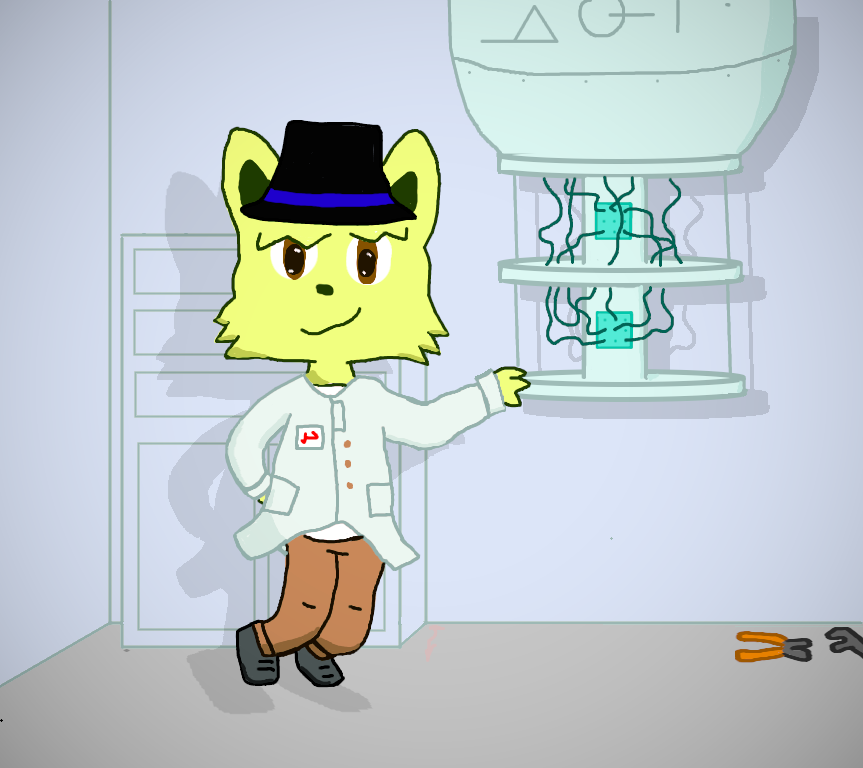Could Aspectual Computing be the Next Big Thing? - An Interview with Jelia Nelsom

For decades, the concept of using aspects in computers was theorized by many sorciologists as a potential alternative to the current standard. But does anyone actually know they work? And what are their potential applications in the future? A team in South Brampson are hoping to answer these questions sooner rather than later, headed by a young sorciologist named Jelia Nelsom, whom we've interviewed on her role in the A-BIG project.
Transcription
Meral: Hello Jelia, good to have you here.
Jelia: No problem.
Meral: So first up, could you perhaps explain to all the viewers at home what an aspectual computer is?
Jelia: Sure, it may sound complicated but it's actually kind of simple once you understand it. Most computers these days operate with a special type of metal, that when combined allows electricity to pass through it based on the presence of other electricity. This fundamental principle is what drives all computation, regardless of whether its in your home, your pocket, your vehicle, etcetera.
Aspectual computation however, is different. Rather than using electricity to decide what to do, it uses aspects and the interactions between them. It still runs on electricity of course, but this is just used to get the aspects to where they need to be, it doesn't do any of the heavy lifting.
Meral: Intriguing. Could you perhaps tell us more about how the aspects interact?
Jelia: If you've taken any sorcia class in the past few decades you probably already know all of them. Most aspectual computers the team is working with use the four base aspects, Flamma, Flumine, Aer and Solum, with Medius acting as a blank slate for the aspects to reside when they aren't being used. And of course, combining them gives you fusion aspects, with their own properties. Some are also considering the use of symbolic aspects to increase the speed of ordinary arithmetic, but not much has come of it yet. The initial results are very impressive however.
Meral: So when exactly did you start this project?
Jelia: Well, it started as mostly just a personal gig of mine. I was freshly graduated from the Brampson Sorcia Academy and decided to take up aspectual computation. I've read about some of it while there but I've never really seen much done outside of simulations on ordinary hardware.
The first device I created was the A-BL, which was nothing special. While I may have used multiple incredibly precise atomic rearangment spells to create its internal circuitry, it was still substantially less powerful than say, a Freighter-8. But word got out and soon, plenty of sorciologists wanted a piece of the metaphorical cake.
Meral: What about the A-SMALL?
Jelia: Oh yeah, that was our first big success. After founding a proper team to help develop aspectual computing into what it is now we began work on something with substantially more power. And what we came up with was the A-SMALL. Two aspectual cores, connected via conduits allow for computation to happen substantially faster. It's still not much, mind you, only around 64 aQuads of storage space.
Meral: Well said. Now what about your current project, the A-BIG?
Jelia: The A-BIG is similar in spirit to the A-SMALL, but much bigger and more powerful. So big in fact, that it takes up multiple racks inside a very large room. Or at least, that's what we are planning. Right now there are plenty of logistical problems, such as the usage of subatomic printers being very slow and, in one case, someone accidentally spilling slivetjuice over an entire rack and burning the place down. It was not a fun day.
Regardless, we believe that the A-BIG will be very much worth it, and provide valuable insight into the future of aspectual computing as a whole.
Meral: Any practical applications of aspectual computing?
Jelia: Well, I don't expect it to make it in anyones pockets anytime soon, but the Furria guild has shown interest in using for various tasks. I'm not entirely trustworthy of them however, since they don't really have any kind of moral or ethical boundaries when it comes to tasks contributed. They're not much of a formal organisation anyway.
One application we do have quite a lot of hope for however is potentially reverse-engineering of Path Reflectors. Could you imagine if, say, we managed to build a brand new one from the ground up? Or even find a way to get past Leyspace? It's probably wishful thinking, but it's a thought I'm not giving up anytime soon.
Meral: Alright. Any last things you want to say before we wrap things up?
Jelia: Oh yeah, something very important actually. Every month since the beginning of our project, one of our colleagues seems to disappear. I have no idea why and it's starting to seriously freak me out.
Meral: Oh dear. That doesn't sound too nice.
Jelia: It isn't. We've spoken to so many to see if they can help and yet, nothing. Some of our team believe it might be caused by a rogue group trying to use our research for themselves, but honestly, we don't have much information to go off of. I'm genuinely scared.
Meral: Goodness. Well hopefully things will work themselves out. Once again, thanks for your time here, Jelia.
Jelia: Alright, have a good one.
